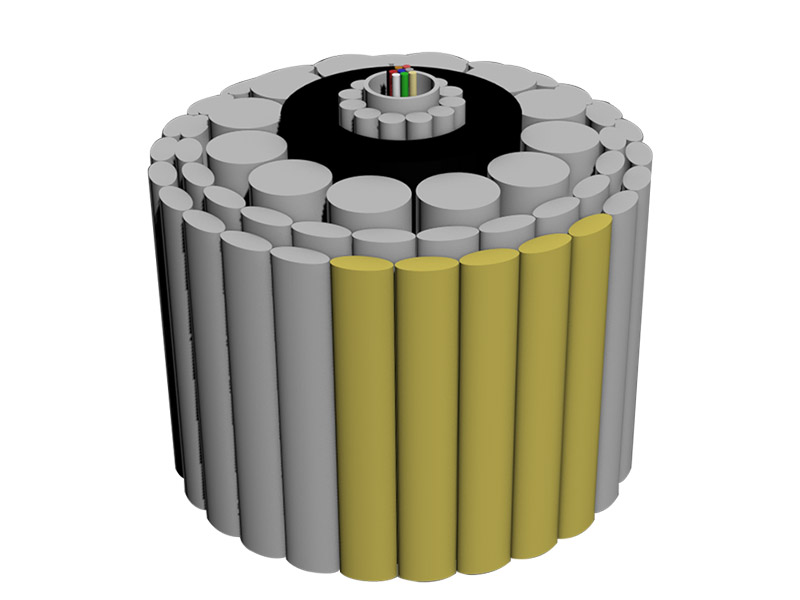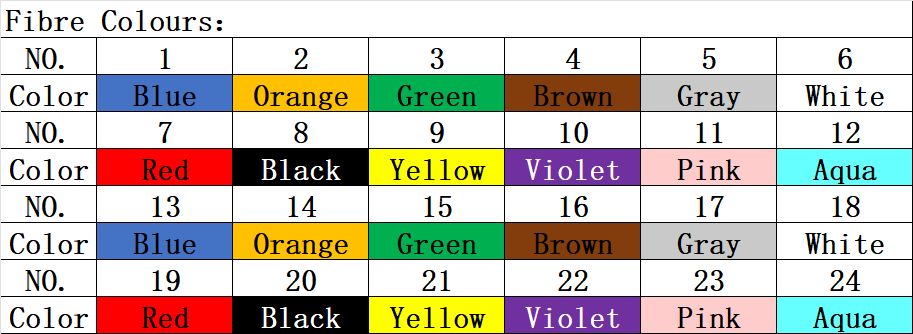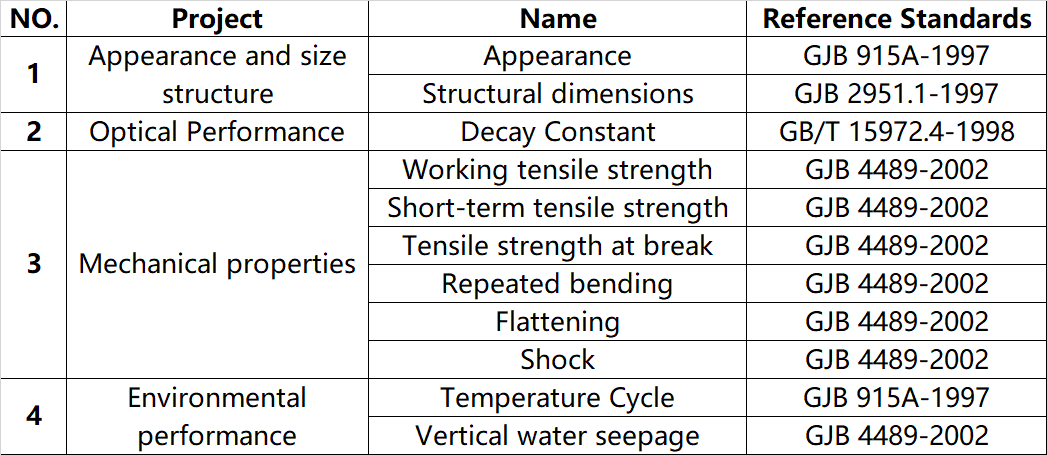

Submarine cables are communications cables that connect continents. They are mainly composed of multiple optical fibers with a protective outer layer to prevent water and physical damage. They are used for high-speed data transmission to support the Internet, telephone and other communication services. Modern submarine cables can reach transmission rates of hundreds of Tbps and can connect distances of tens of thousands of kilometers.
ISO-9001 Quality management systems – requirements
ISO-14001 Environmental management systems
ISO-45001 Occupational health and safety management systems
ITU-T G.978 Characteristics of optical fibre submarine cable
IEC-60793 Optical fibers
IEC-60794-3 Optical fibre cable-Part3:Outdoor cables – Sectional specification
ITU-T-G.652 Characteristics of a single-mode optical fiber and cable
EIA/TIA-598 Optical fiber cable color coding
ASTM E29- 13 Standard practice for using significant digits in test data to determine conformance with specifications
GJB-4489-2002 General specifications for submarine optical cables
GB/T 18480-2001 Specifications for submarine optical cables
GB/T15972-2008 Specifications for optical fiber test methods
GB/T 51154-2015 Code for engineering design of optical fiber submarine cable systems
Submarine optical cable is the main component of the underwater system, connecting underwater equipment such as splitters and sensors, and performing the function of optical signal transmission.

3.3.1 Mechanical properties
a) Ultimate Tensile Strength Load (UTS): ≥120kN;
b) Nominal Transient Tensile Strength Load(NTTS): ≥75kN;
c) Normal Operating Tensile Strength Load(NOTS): ≥50kN;
d)Minimum Bending Radius Without Tension: ≤0.8m;
e)When the submarine cable is subjected to mechanical performance test, the additional attenuation of the optical fiber should not be greater than 0.05dB, and the optical fiber should not have permanent additional attenuation after the test (when the absolute value of the measured value is not greater than 0.03dB, it is judged to have no additional attenuation);
f) When the submarine cable is subjected to working tensile load test, the optical fiber should not have elongation (when the absolute value of the measured value is not greater than 0.005%, it is judged to have no elongation);
g) When the submarine cable is subjected to a short tensile load test, the elongation of the optical fiber shall not exceed 0.15%.
3.3.2 Structural performance
a) Weight per unit length: ≤1.2kg/m;
b) Diameter: ≤24.3mm;
c) Single-section manufacturing length: ≥90km (the specific length of a single section is determined by the design).
3.3.3 Optical performance
This project uses G.652D optical fiber, and the test method should meet the test specifications of GB/T15972-2008.
The main technical indicators of G.652D are as follows:
a) Fiber attenuation coefficient in finished submarine cable: ≤0.19dB/km (@1550nm);
b) Screening intensity: ≥1.38GPa;
c) Fiber margin: <5‰;
d) Number of fiber cores: 24 cores.
The optical fiber color spectrum is shown in Table

Note: The color of optical fiber after No. 12 is added to the basic color
3.3.4 Appearance and identification
a) The submarine cable should be marked with end A and end B, with end A being the top and end B being the bottom. The name of each section of the submarine cable should be marked, and a length sign should be set at intervals of 500m for each section of the submarine cable;
b) The sign has black characters on a white background, and the characters are clear and will not be blurred due to moisture. The sign should be firmly tied and should not fall off during transportation and laying;
c) The length number of the submarine cable on the sign should be large enough to be easy for operators to read when the submarine cable is moving;
d) During the life of the submarine cable, the mark should be clear and durable, not corroded, and the length accuracy of the mark should be higher than ±1m/1000m.
3.3.5 Working life
Not less than 25 years.
3.3.6 Environmental adaptability
a) Working temperature range is -10℃~40℃;
b) Storage and transportation temperature range is -20℃~50℃;
The warranty period shall be based on the warranty period specified by the end user and shall not be less than five years, starting from the date of acceptance by the end user.
The acceptance of submarine optical cables mainly refers to the relevant requirements of GBT 18480-2001 and GJB4489-2002.
